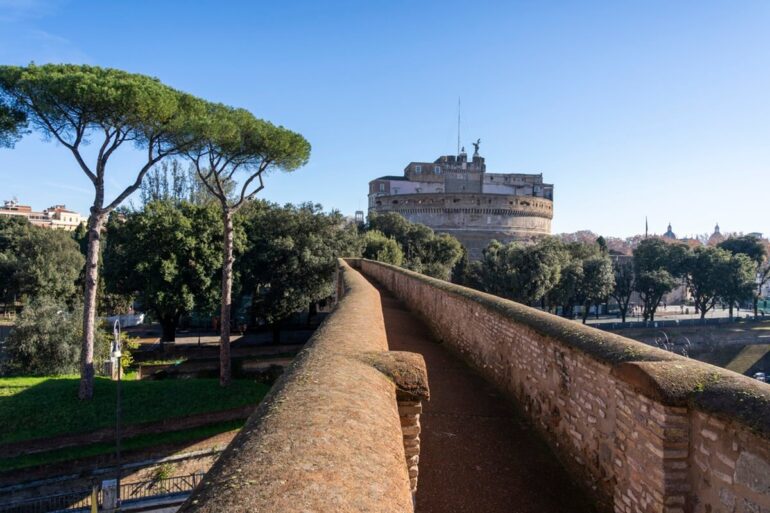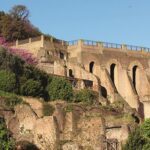Passetto di Borgo reopens after years of restoration. How to visit Rome’s historic papal escape route.
After years of closure, the Passetto di Borgo was reopened to both Romans and tourists on December 23, 2024. Shrouded in mystery and steeped in history, the passageway stands as a silent witness to some of the Vatican’s most turbulent moments. This elevated corridor, hidden in plain sight amidst the bustling streets of Rome, once served as a lifeline for popes seeking refuge during invasions and conspiracies.
Now part of a permanent program of guided tours, including special evening visits, the entire stretch of the Passetto—from the Torre del Mascherino at Piazza della Città Leonina to the Bastione San Marco at Castel Sant’Angelo—is once again accessible.
INSPIRATION
Visit Castel Sant’Angelo of Rome, The Mausoleum of Hadrian
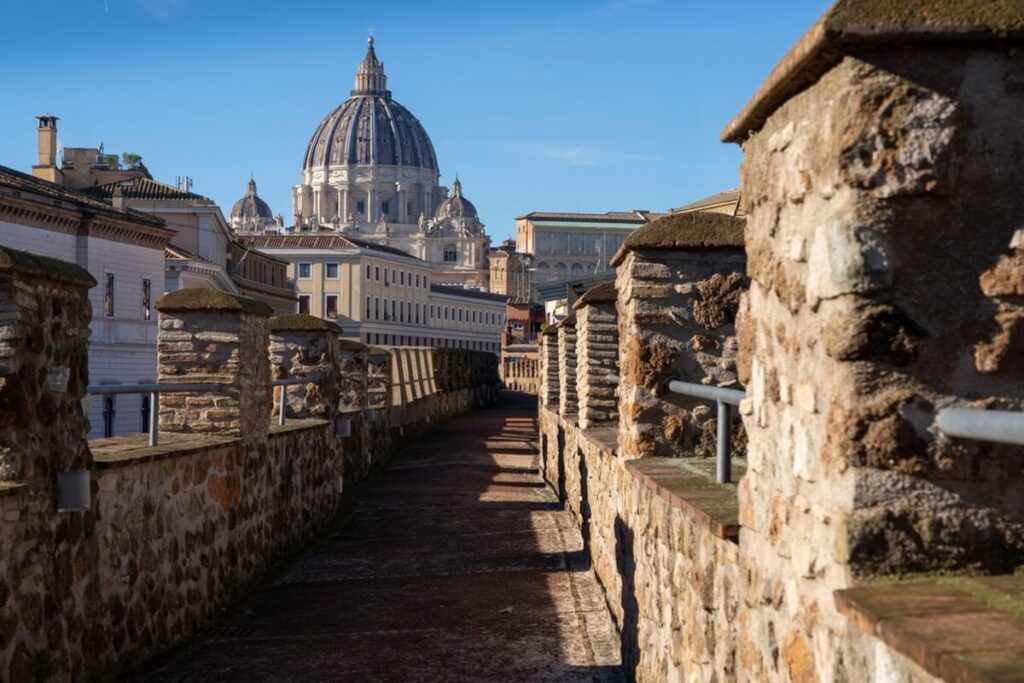
What is the Passetto di Borgo?
Originally built for defense, the Passetto di Borgo is the secret passage that links the Vatican to Castel Sant’Angelo.
Once also known as “Er Coridore de Borgo”, the Passetto di Borgo is the elevated and fortified section of the Vatican Walls that stretches from the Vatican Apostolic Palace, along Via dei Corridori and Via Borgo Sant’Angelo, ending inside Castel Sant’Angelo.
Originally part of a defensive structure that ran from the Vatican Hill to the Mausoleum of Hadrian, it was built to protect the military camp set up by the barbarian Totila around 547. The modest construction, irregular in layout, was made with large roughly squared blocks, some of which are still visible near Porta Castello. Around 852, Pope Leo IV built a 5-meter-high defensive wall with a walkway, protecting St. Peter’s Basilica and nearby buildings, making use of the pre-existing structure. This is the part used for the construction of the Passetto as we know it today. Over the centuries, it was modified and renewed by several popes, including Nicholas V, Sixtus IV and Alexander VI.
The Passetto’s purpose was to control the lower area of the Borgo and suppress potential uprisings, thanks to its elevated position from which arrows could be easily shot or firearms fired. It also served to secretly imprison high-profile prisoners whose presence in the feared papal jails should remain unknown.
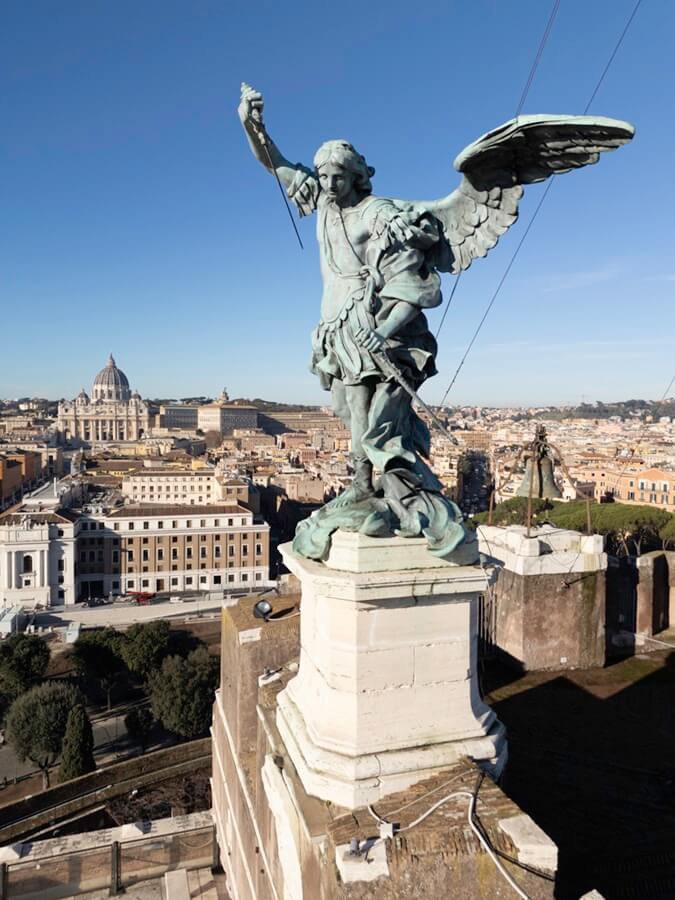
A Refuge During Rome’s Darkest Moments
Most importantly, the Passetto provided a quick escape route for the pope, who could take hideaway in the well-protected walls of Castel Sant’Angelo in case of enemy attack or assassination attempts.
For example, back in 1494, Pope Alexander VI Borgia used the 800-meter-long Passetto to seek refuge at Castel Sant’Angelo during the invasion of Rome; or similarly in 1527, Clement VII Medici found refuge at Castel Sant’Angelo during the Sack of Rome, by the Landsknechts of Charles V. The pope barely escaped, running through the narrow passage while courtiers and nobles shielded him with a dark cloak to prevent his white robe from becoming an easy target. This marked the end of the Passetto’s defensive role by the end of the 16th century, but its legendary status and the tales it evokes continue to intrigue.
Secrets, Scandals and Strange Beliefs
There are many curious stories and beliefs related to the Passetto: its mystery isn’t just about secret royal escapes during tough times. Among the more eccentric rumors is that Pope Alexander VI is said to have used it to reach the rooms where he met with his mistresses.
From this story arose a peculiar practice: it was believed that by walking the 800 meters of the Passetto 77 times, covering a little more than 60 km, men could recover their lost power… perhaps walking the Passetto was the ancient Roman equivalent of a workout!
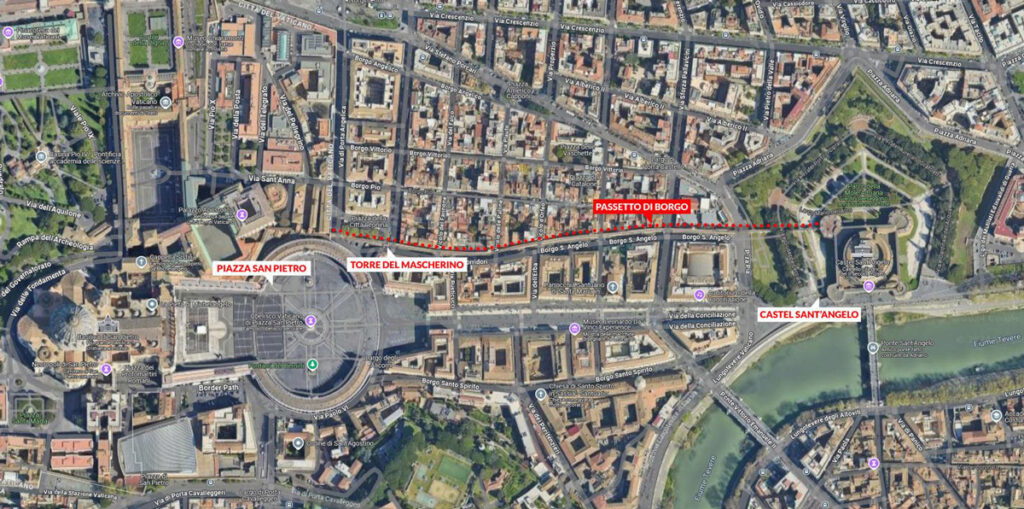
How to Visit the Passetto di Borgo
The guided tours allow you to walk the entire Passetto, from the Mascherino Tower in Piazza della Città Leonina to the San Marco Bastion at Castel Sant’Angelo. The route alternates between two levels: the upper is an open-air level that offers a panoramic walk with spectacular views of the city. On the other hand, the lower is a covered level representing the “secret” corridor that allowed popes to safely move from the papal apartments to the fortified castle.
At the Bastione San Marco, visitors can explore a dedicated exhibition space featuring artworks and historical artifacts that bring to life the stories of the Passetto and Castel Sant’Angelo. A multimedia installation enhances the experience with an immersive narrative, while a virtual tour available on the Castel Sant’Angelo website allows anyone to explore the Passetto from anywhere in the world.
To ensure inclusivity, significant accessibility improvements have been made, including the installation of two elevators and adjustments to certain slopes, making the Passetto fully accessible to visitors with mobility challenges. For more information about tickets and visiting hours, visit the Castel Sant’Angelo website or Coop Culture.
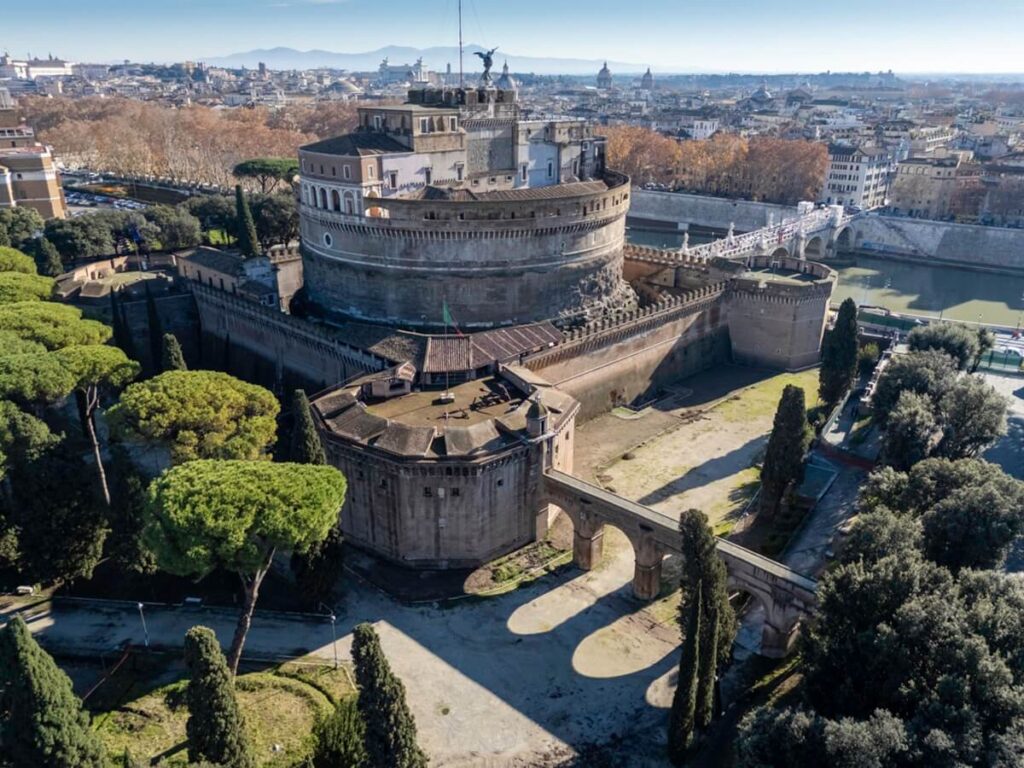
Whether you’re a history enthusiast, an art lover, or simply a curious traveler, a visit to the Passetto is an unforgettable journey through time. This passageway is not just a relic of the past; it’s a living testament to the enduring spirit of Rome. As you walk its path, feel the echoes of history—its legends are as alive as ever.
Passetto di Borgo
Piazza della Città Leonina (angolo via del Mascherino)
Tickets:
Daytime entry to Passetto and Bastione San Marco only: €4 (with legal reductions and free admissions) + €12 for the mandatory 1-hour guided tour
Integrated daytime entry to Passetto + Castel Sant’Angelo: €16 (with legal reductions and free admissions) + €10 for the 1-hour guided tour of Passetto di Borgo and Bastione San Marco
Special nighttime entry: €4 (with legal reductions and free admissions) + €24 for the special guided tour
Information:
06 39967100


